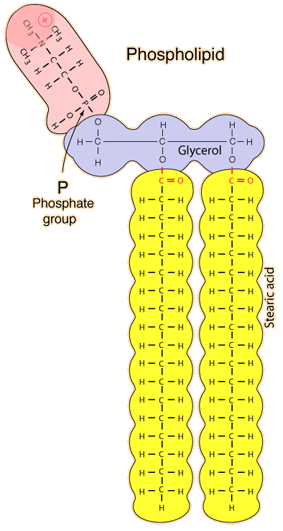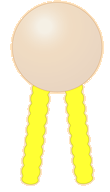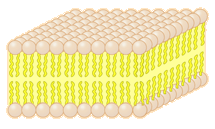Phospholipids
Phospholipids make up an important class of lipids for the construction of cell membranes. The phospholipids are not "true fats" because they have one of the fatty acids replaced by a phosphate group.
 | This sketch of a phospholipid molecule shows two fatty acids and a phosphate group attached to a glycerol backbone. Stearic acid is shown as the fatty acid, but there are many variations in the fatty acids.  In sketching cell membrane structures, a phospholipid molecule is often represented by an icon like the above with the top part representing the polar phosphorous-containing part and the two extensions representing the fatty acids. |
Phospholipids tend to arrange themselves into double-layered membranes with the water-soluble phosphate ends on the outside and the fatty acide extensions on the inside. |  |
Biochemical concepts
Chemistry concepts
Reference
Enger & Ross
Ch 3,4
| HyperPhysics*****Chemistry | R Nave |